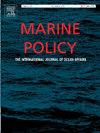社区参与和合法化:共同设计一个以社区为基础的海洋保护区
IF 3.7
2区 社会学
Q2 ENVIRONMENTAL STUDIES
引用次数: 0
摘要
海洋保护区越来越多地被用作保护全球海洋栖息地和生物多样性的工具。尽管如此,在人口密集的多用途沿海地区建立海洋保护区具有内在的冲突潜力,因为保护和经济发展并不总是齐头并进,当地用户可能不同意指定这种保护工具。利用包容性和透明的参与性过程共同设计海洋保护区可以被视为保护生物多样性的一种方式,同时承认当地用户的需求,并建立适合这两个目的的保护工具。在这里,我们描述了一个参与式过程,该过程旨在共同设计一个社区海洋保护区,该保护区位于阿尔加维(葡萄牙南部)的一个生物多样性、渔业和旅游热点地区,其中大多数利益相关者(96% %)支持最终的MPA提案。详细描述了所使用的方法和工具,批判性地分析了所吸取的经验教训,并提供了在其他现实中使用的路线图。所收集的证据表明,所开发的方法可以使保护和经济活动在保护沿海海洋栖息地方面分享相同的基础,并倡导相同的目标。本文章由计算机程序翻译,如有差异,请以英文原文为准。
Engaging and legitimizing communities: co-designing a community-based Marine Protected Area
Marine Protected Areas are increasingly used as tools to preserve marine habitats and biodiversity worldwide. Nonetheless, creating MPAs in densely populated multi-use coastal areas comes with intrinsic conflict potential, since protection and economic development are not always hand-in-hand and local users might disagree with the designation of such conservation tools. The use of inclusive and transparent participatory processes to co-design such MPAs can be seen as a way of protecting biodiversity while acknowledging the needs of local users and building conservation tools that fit both purposes. Here we describe a participatory process developed to co-design a Marine Protected Area of Community Interest in a biodiversity, fishing and tourism hotspot in the Algarve (southern Portugal) where the majority of involved stakeholders (96 %) endorsed the final MPA proposal. The methodology and tools used are described in detail, lessons learned are critically analysed and a roadmap to be used in other realities is provided. Evidences collected show that the approach developed allows conservation and economic activities to share the same ground and advocate for the same goals in preserving coastal marine habitats.
求助全文
通过发布文献求助,成功后即可免费获取论文全文。
去求助
来源期刊

Marine Policy
Multiple-
CiteScore
7.60
自引率
13.20%
发文量
428
期刊介绍:
Marine Policy is the leading journal of ocean policy studies. It offers researchers, analysts and policy makers a unique combination of analyses in the principal social science disciplines relevant to the formulation of marine policy. Major articles are contributed by specialists in marine affairs, including marine economists and marine resource managers, political scientists, marine scientists, international lawyers, geographers and anthropologists. Drawing on their expertise and research, the journal covers: international, regional and national marine policies; institutional arrangements for the management and regulation of marine activities, including fisheries and shipping; conflict resolution; marine pollution and environment; conservation and use of marine resources. Regular features of Marine Policy include research reports, conference reports and reports on current developments to keep readers up-to-date with the latest developments and research in ocean affairs.
 求助内容:
求助内容: 应助结果提醒方式:
应助结果提醒方式:


